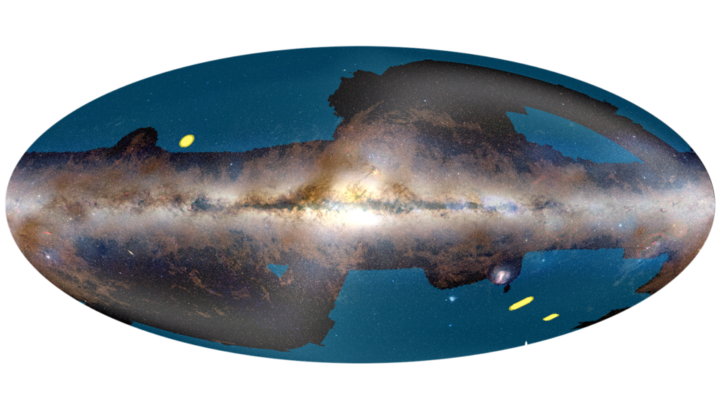The problem was that a tiny amount of unwanted sunlight reached Euclid’s visible instrument (VIS) at specific angles, even with the spacecraft’s sunshield (its back) turned towards the Sun.

Artist impression of Euclid in space
“The original plan was for Euclid to keep its sunshield facing the Sun. But soon after launch, disturbing light from the Sun was detected in the test images,” explains Ismael Tereno of the University of Lisbon, Portugal, and lead of the Euclid survey operations support team, operated with the support of the Portuguese Space Agency.
“After intense troubleshooting, science, engineering, and industrial teams found that for this light to disappear, Euclid needed to observe with a different orientation (attitude) with respect to the Sun. This meant that the original survey design would no longer work. We had to quickly come up with a new strategy, implement it, and test it,” adds João Dinis, also from the University of Lisbon, Portugal who and Ismael were responsible for the survey (re-)design.
To minimise the effect of ‘stray’ sunlight, the teams found out that Euclid needs to observe with a more restricted rotation angle, such that the sunshield is not directly facing the Sun, with a small but impactful tilt in one direction. With this new restricted attitude, parts of the sky could not be reached from any point in Euclid’s orbit around L2. “It proved very difficult to find a good survey solution, and we had to go back to the drawing board,” recalls Ismael.
A giant puzzle
It was the start of a very intense phase for João, Ismael and the survey operations and science teams. “João quickly had the insight of what needed to be changed, and then worked around the clock to propose a workable re-design,” says Ismael.
Designing the Euclid survey was a giant puzzle. Aside from the scientific goals and the angle that Euclid needed to observe from, many other factors needed to be considered.
The largest fraction of the mission’s observations will be devoted to a ‘wide’ survey, covering more than one third of the sky. The wide survey is complemented by a deep survey, taking about 10% of the total observing time. Aside from that, routine calibration observations also had to be scheduled to fit the puzzle.
Xavier Dupac, ESA survey scientist for the Science Operation Centre at ESAC in Spain, made sure that the survey designed by João, Ismael and the team could be executed. “For example, we need to take into account the time it takes for the spacecraft to rotate from one observing position to the next. These times need to be included in the survey design in addition to the actual observing time,” explains Xavier.
In the end, the teams came up with a workable solution that meant more overlaps between adjacent observations had to be made. Euclid’s survey is now slightly less efficient, but all necessary areas of the sky can be reached and the overall loss in survey area is kept to a minimum.
“The teams worked very hard to redesign the survey in a short amount of time, this is a major achievement,” says Valeria Pettorino, Euclid project scientist for ESA. “And this is not the end of the story. As the mission advances and the scientific results start to arrive, the teams will continue to optimise the survey, and be ready to adapt it if needed.”
Looking ahead at Euclid’s first survey year
Today, Euclid officially started its survey. The telescope is currently scheduled to observe a patch of 130 square degrees – more than 500 times the area of the full Moon – over the course of the next 14 days. This patch is in the direction of the constellations of Caelum and Pictor in the Southern Hemisphere.

Euclid’s wide and deep surveys
Euclid will cover around 15% of its survey in the coming year. This first year of cosmology data will be released to the community in summer 2026. A smaller data release of deep field observations is foreseen for spring 2025.
Source: European Space Agency

